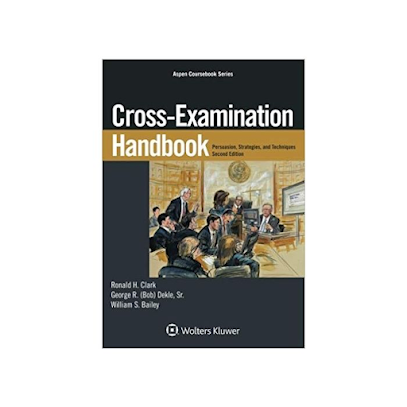We are examining the THE FOUR Cs of CROSS-EXAMINATION as follows:
1st – CONTENT – how to select the content of your cross
2nd – CONSTRUCTION – how to construct the cross – form of the questions. Transitions. Sequencing.
3rd – CHARACTER – how to behave during cross to project fairness to the jury
4th – CONTROL – how to control the witness – particularly the evasive and runaway ones
Prior posts examined the purpose of cross-examination and the
first C—CONTENT. The content is primarily going to be concessions from the witness that support your case theory or undermine the opposing party’s case theory. Now that of we have identified the content—the truths we’ll argue in closing and we’ll harvest during cross, the next C is: how do we CONSTRUCT cross so most effectively delivered to the jury?
The cross is constructed using the concessions you will gather during cross; those that if the witness does not give them will stamp the witness’s answer either a lie, mistaken or ridiculous. Who is testifying during cross? Who is supplying the information? It’s not the witness; it’s the cross-examiner. Cross-examination is your opportunity to testify.
You decide – what information to elicit
You decide – how to phrase it
You decide – the order of the questions
Cross is your opportunity to persuade – to testify.
To identify the concessions to seek, just brainstorm: ask yourself what truths supporting your case theory or undercutting the other side’s you can elicit because they are truths you can prove, or they just make common sense.
After you have identified the concessions, WRITE OUT your cross on argument- cross-examination sheets of paper. At the top of the page, write your point for argument – the truth you are seeking and what you will argue at the end of the case. For example, at the top of the page, you could have the word “BIAS”. Draw a line down the middle of the page. On the left side of the page write single-fact statements supportive of your argument. For example, if the argument is that the witness is biased, the statement could be: “You’ve known the plaintiff for 10 years.” Limit yourself to no more than 10 words in the statement. Factual statements will compel you to ask leading questions, rather than open ended ones. Always be a leader; never a reporter. Reporters ask open-ended questions: who?? what when? Don't open the door for the witness with open-ended questions.
You may be thinking that these are statements, not questions, and that is right. It’s your turn to testify. You know what the answer should be-the truth and if the witness doesn’t give it to you, they damage their position. To make the statement a question, just raise the tone of your voice at the end of it. If you draw an objection that it’s not a question, you can add, “isn’t that correct” to the statement.
There are BENEFITS to writing out cross with this format. First, it leads to ends-means thinking. Each of your questions has a purpose. Second, as Posner and Dodd write in Cross-Examination: Science and Techniques: “Not only does one fact per question tightly control the witness, but the jury is more persuaded and convinced by this type of presentation.” Third, single fact statements are emphatic and that helps with jury retention.
But, you ask, what about the right side of the page? What goes there? On the right side put notes that guide you to evidence that supports the statement on the left. For example, if on the left side of the page it states, “At your deposition, you said X,” on the right is the page and line number of the witness’s statement. If the witness does not concede to saying X at the deposition, you can quickly go to the deposition and use it to force a concession or barring that, impeach the witness. Also, on the right, you can take notes of those golden statements by the witness that you could use in closing. Don’t take many notes during cross because you want to keep eye contact with the witness and listen carefully to the witness’s responses.
In general, how should the pages be organized? How should you sequence the content. As a guide, start with non-contested facts works well. Ask questions that get “yes” answers and have a friendly demeanor.
Have TRANSITIONS between topics. This is an opportunity to show signposts to the jury, to help them follow you along. For example, "Now let's discuss your report."
No matter what, save something strong to use at THE END of cross – leave a solid last impression. To illustrate how to conclude a cross watch George Stevens’ classic A Place in the Sun which is based on the book American Tragedy which is based on a murder case of Chester Gillette.
Again, end with something strong. If you have trouble remembering how to finish, remember Place in the Sun ending with a bang.





